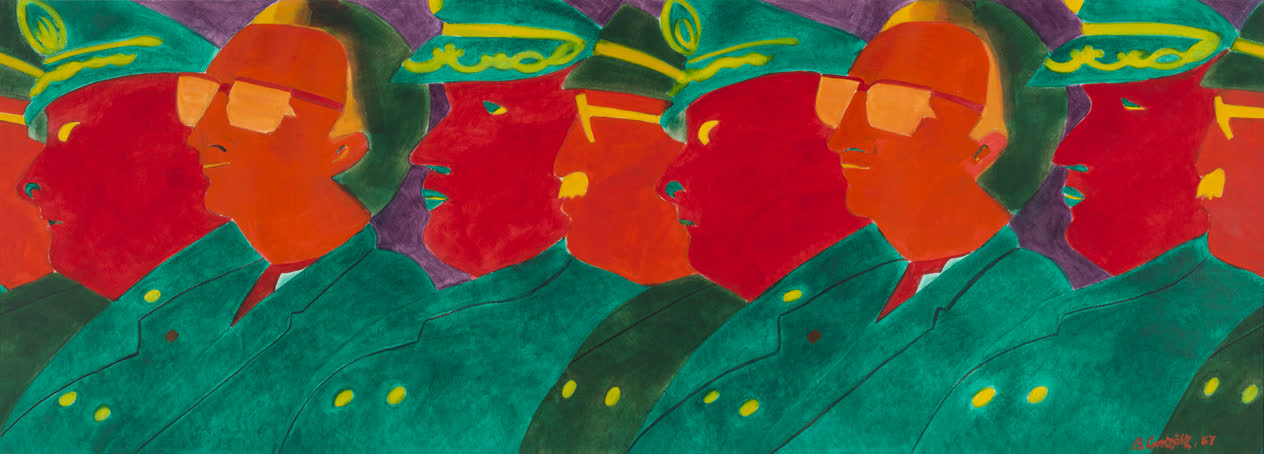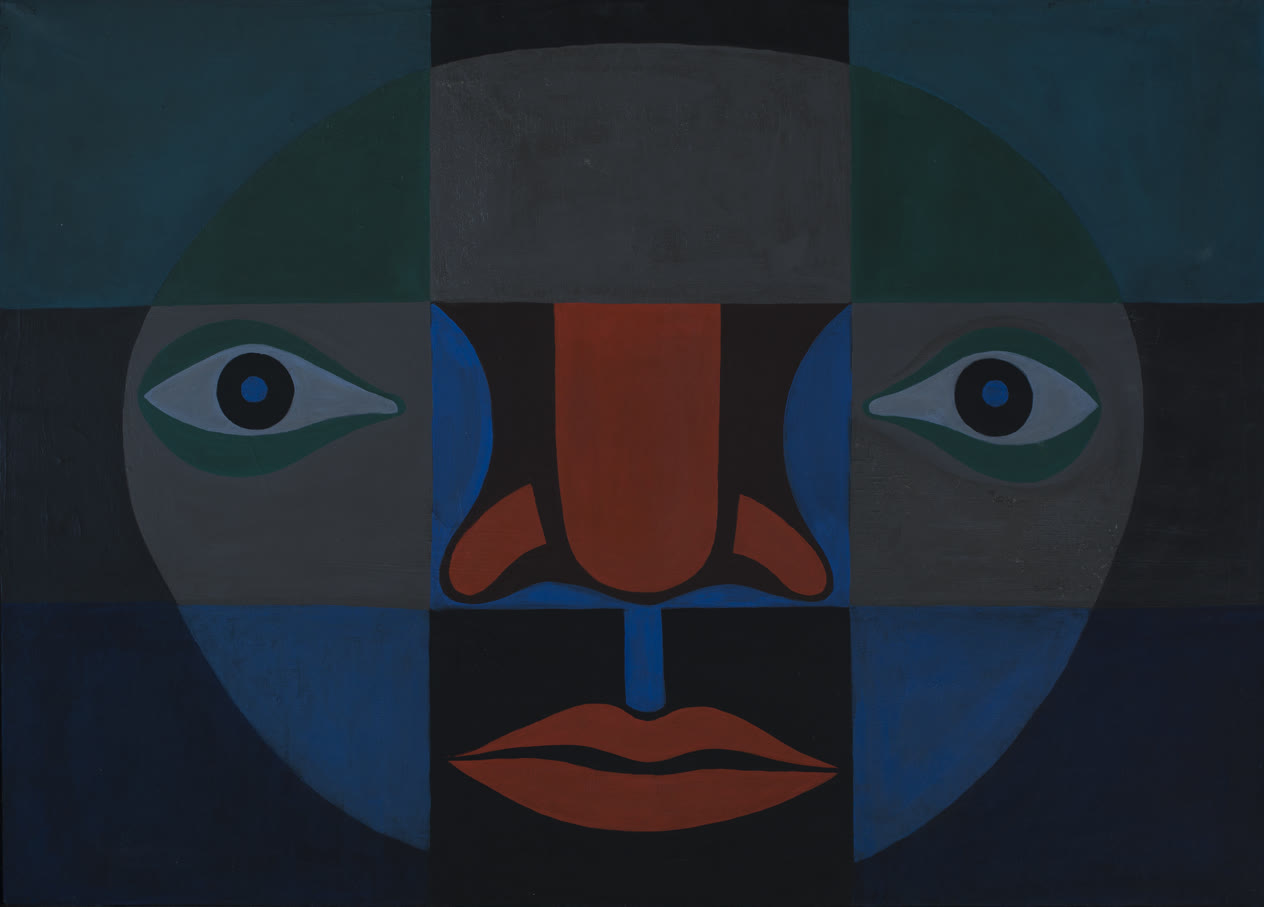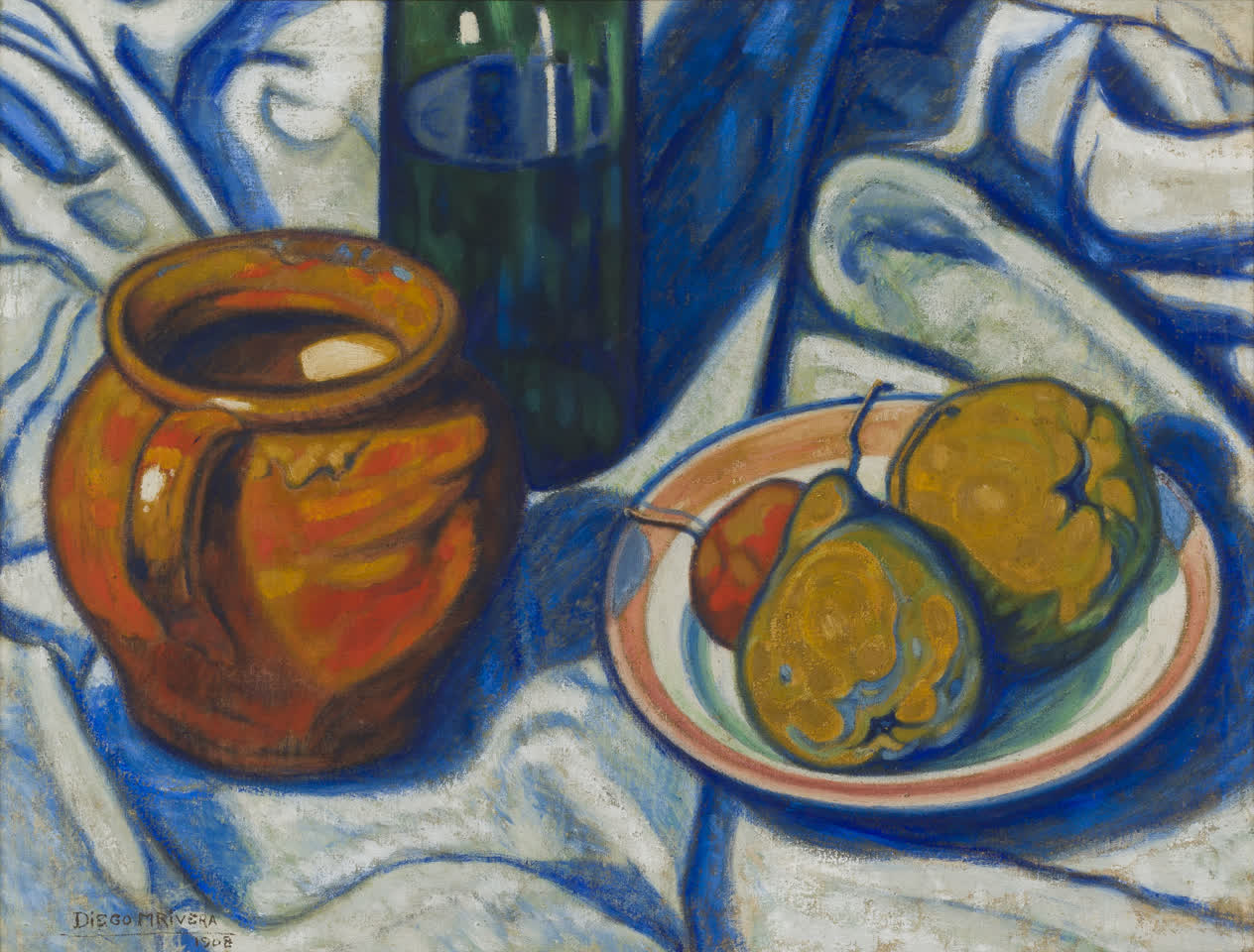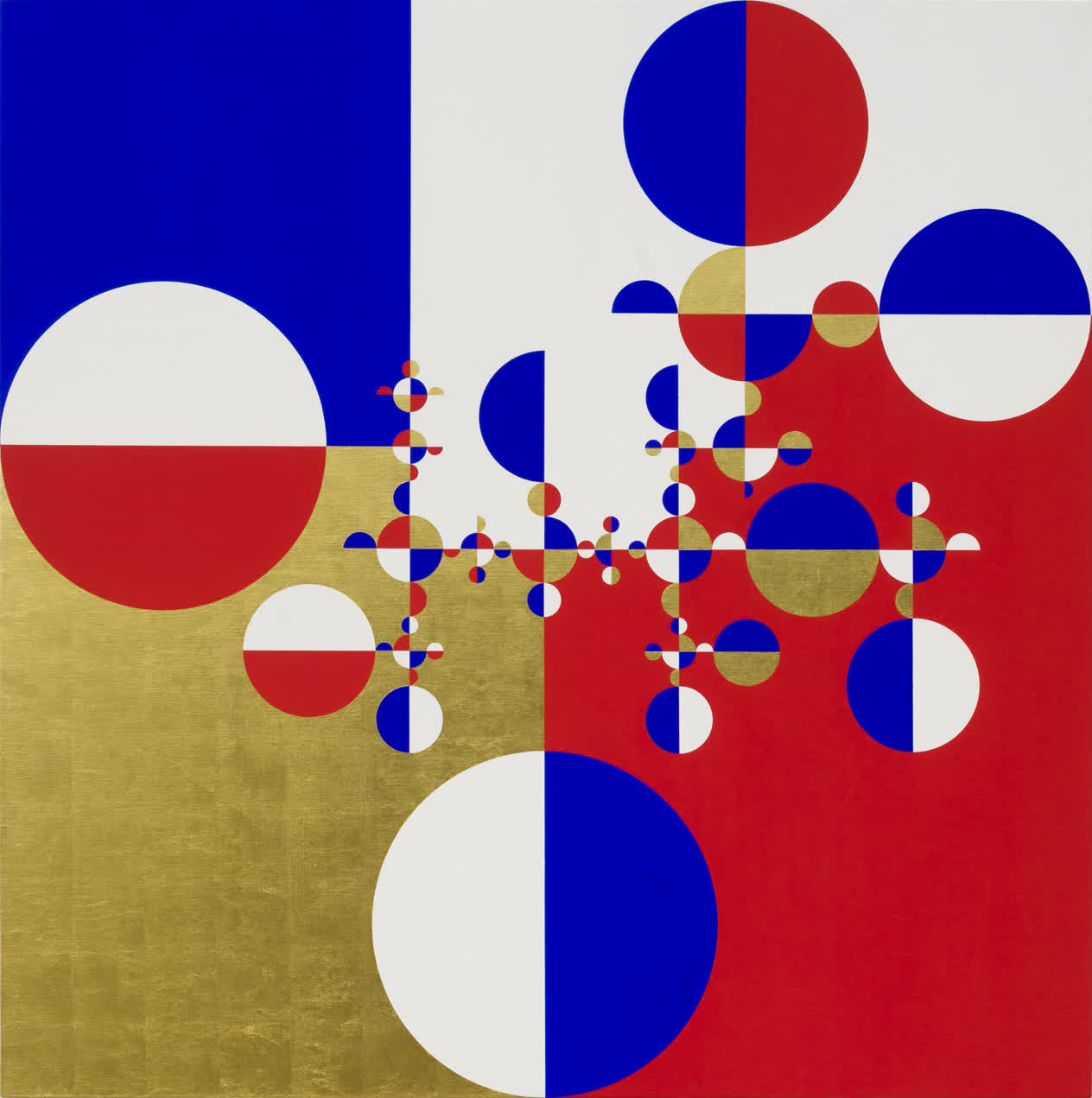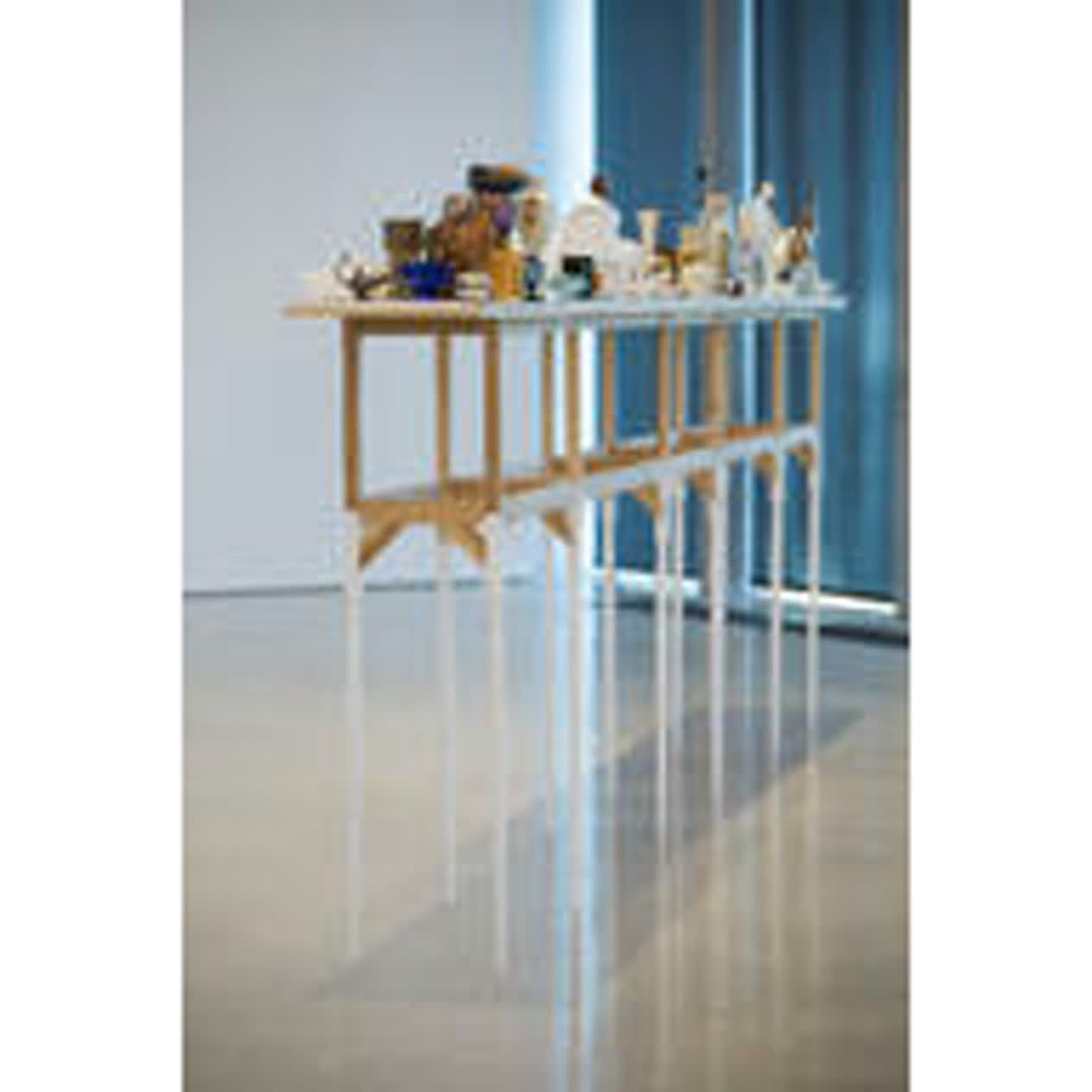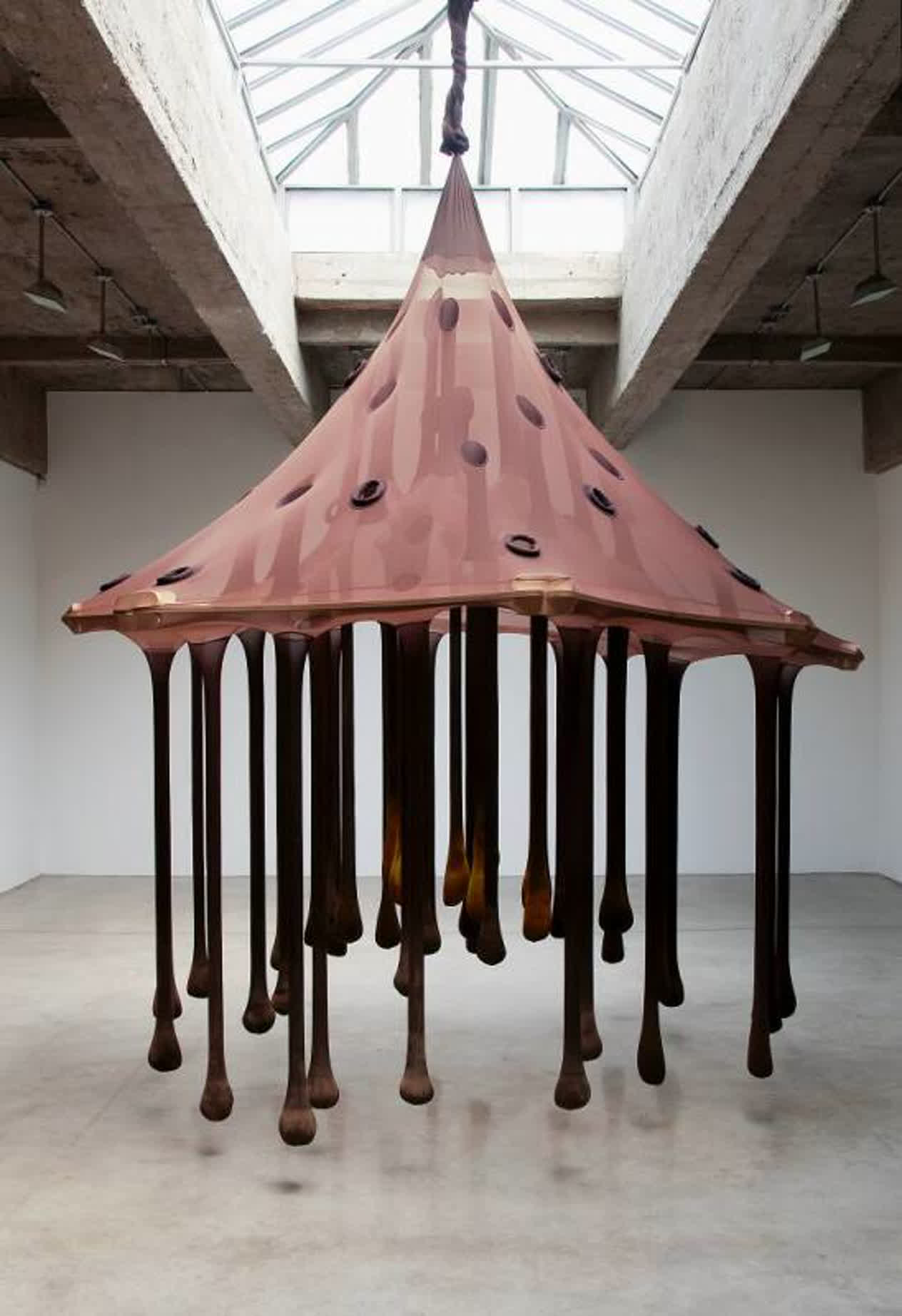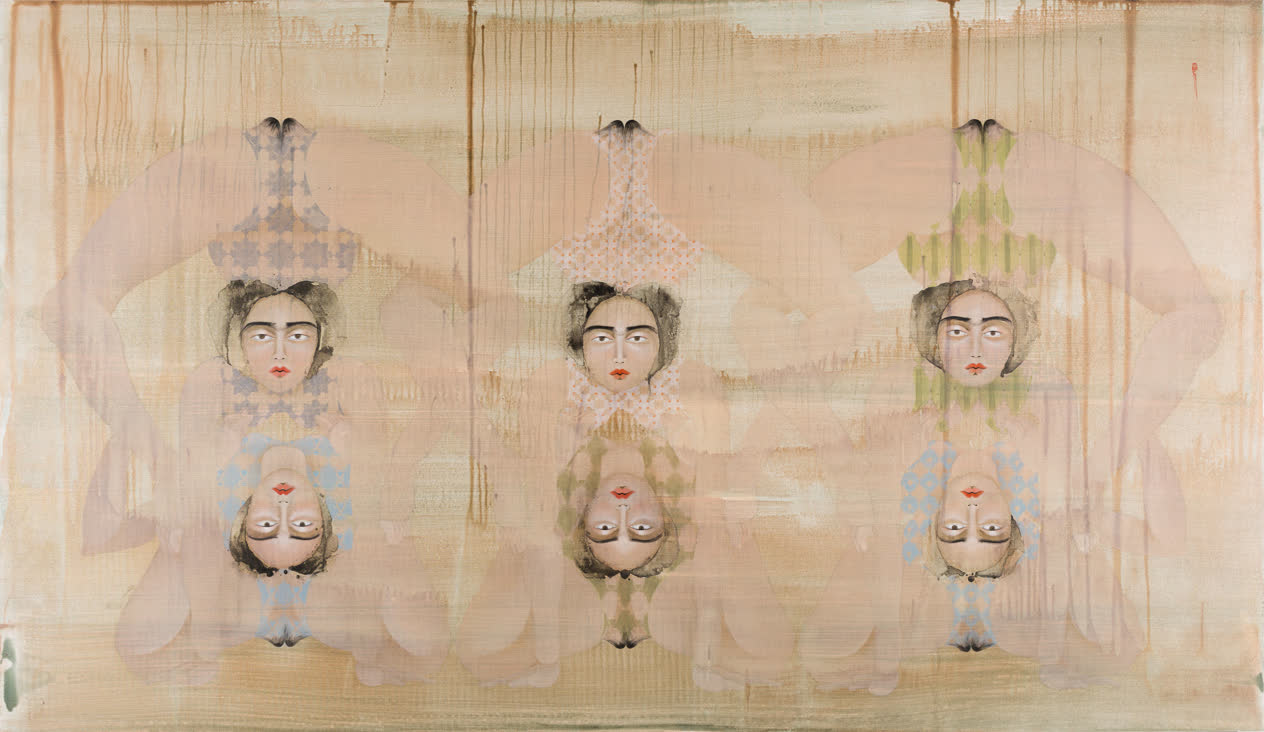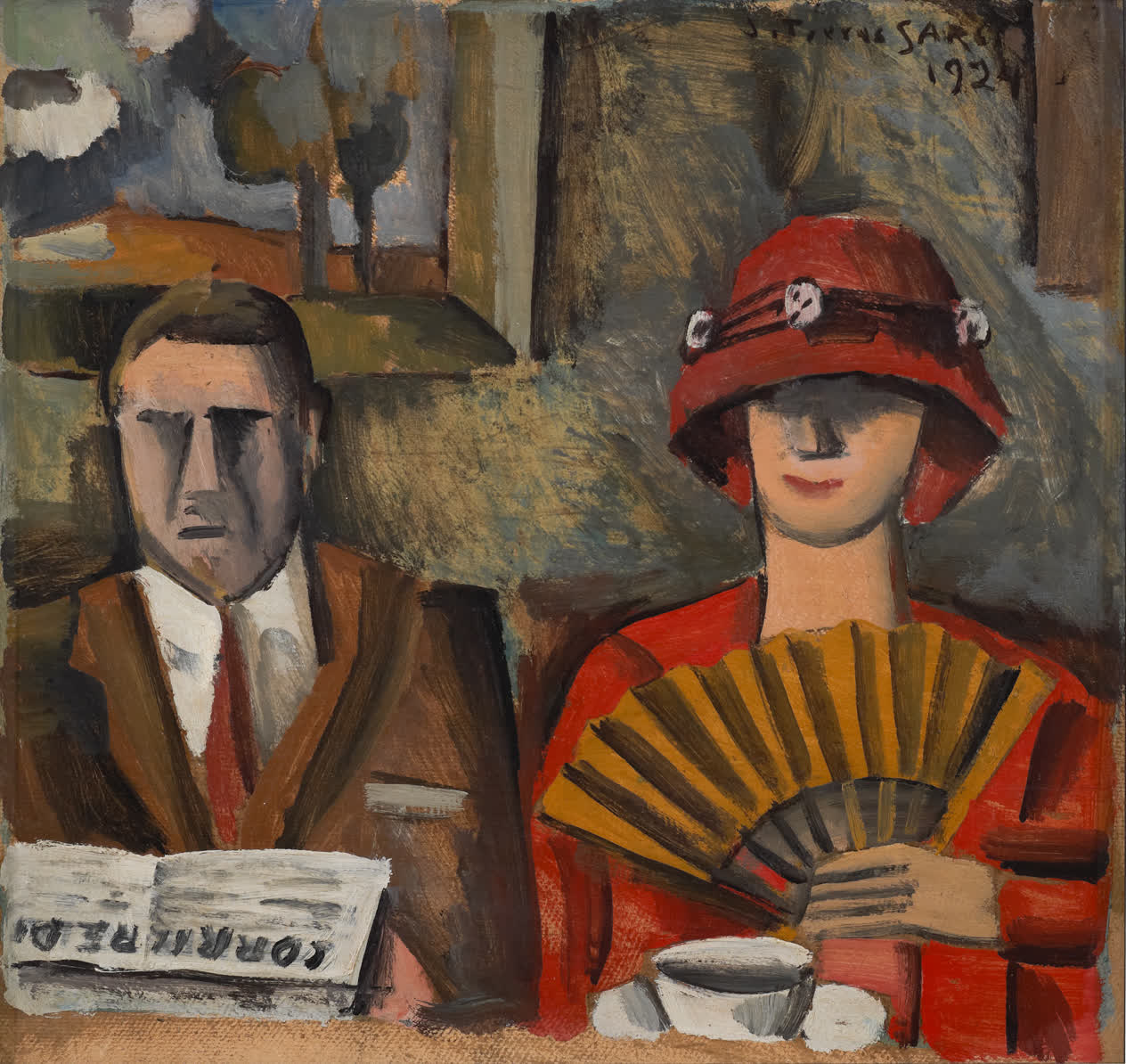Teresita Fernández Fire (America) 5 2017
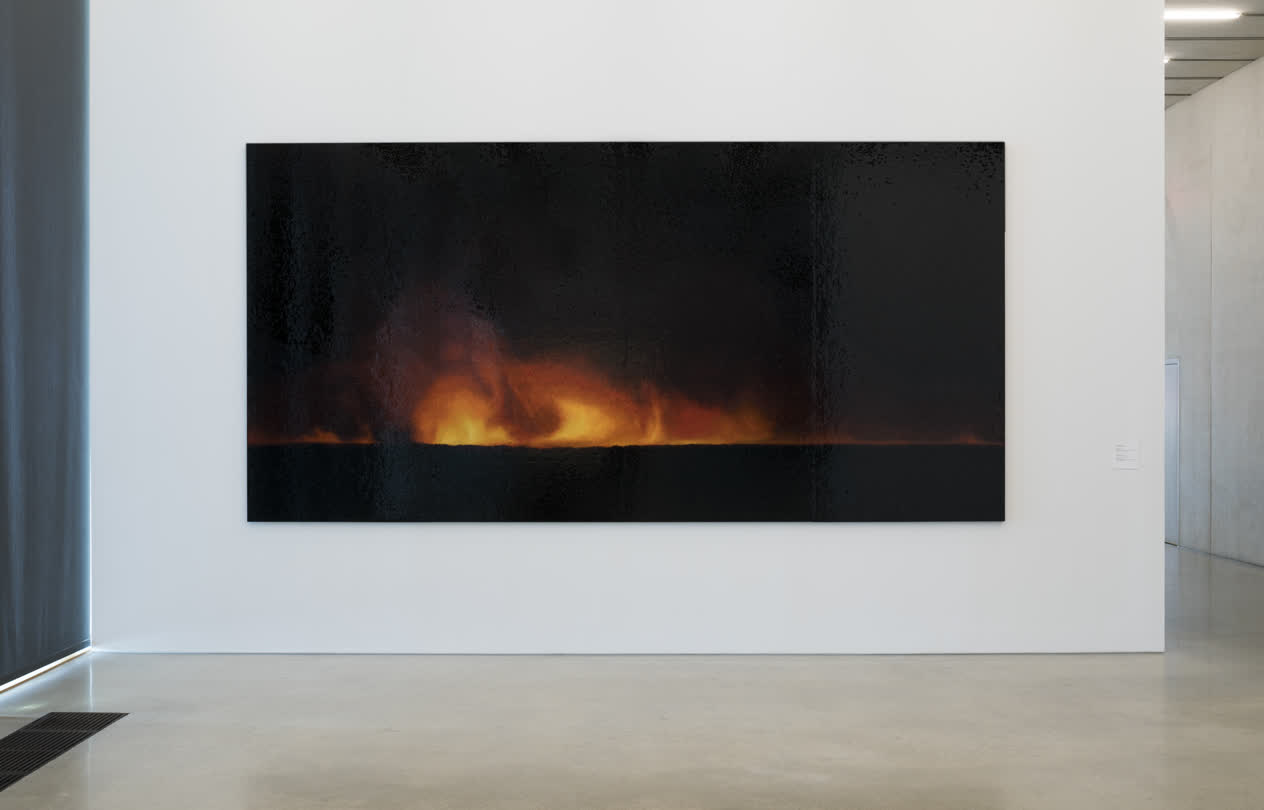
© Teresita Fernández

Fire (America) 5 is a nocturnal view of a distant landscape where fire is the protagonist. In this case, earth and fire are not only depicted but are elemental to the mural’s medium—glazed ceramic. The fragmentation of the work into tiny, irregular pieces also adds to the image of fiery destruction. The word America in the title is the only reference to place. Besides being the name of the continent, this term is commonly used to refer to the United States of America. The associations of this country to a distant burning city or forest gives political connotations to the work. Fire cleanses and renews, but it also aggressively deteriorates and exhausts things; the wild flames of this American landscape —the American Dream?— are both dazzling and blinding; they carry passion and are a destructive force. It is not fortuitous that this piece appears at a moment when American society is so polarized that irreconcilable standpoints have led to dramatic episodes of violence, racism and intolerance throughout the nation. In this sense, Fire (America) 5 appears as a reality check and a sad omen of future.
Making reference to the technique of slash and burn in the agricultural cycle of the indigenous people in the Americas, the artist declares: “This new body of work seeks to redefine “landscape” as being far more than a fixed, framed vista in front of your eyes, by also considering what has happened on and to the land itself.”
Identification
Title
Fire (America) 5
Production Date
2017
Object Number
2017.022
Credit Line
Collection Pérez Art Museum Miami, museum purchase with funds provided by Jorge M. Pérez
Copyright
© Teresita Fernández
https://www.pamm.org/en/artwork/2017.022
Copy artwork link
Physical Qualities
Medium
Glazed ceramic
Dimensions
96 x 192 x 1 1/4 inches
Visual Description
Fire (America) 5 by Teresita Fernández is a large format, landscape-oriented mosaic. It measures ninety-two inches along its shorter side, and one hundred and ninety-two inches along its longer dimension. It is made up of four equally sized vertical panels, that when joined together are equivalent to eight feet high by sixteen feet wide. Altogether, this artwork forms a large rectangle that is twice as wide as it is tall. It does project slightly from the wall, with a depth of one and quarter inches.
This artwork is a mosaic, meaning that the large image displayed across its rectangular surface is actually made up of thousands of tesserae or little tiles. They each are no bigger than half an inch on either side. Up close, the imprecise borders of these individual tiles are visible, as they are not perfect aligned, nor are they all perfectly square in shape. The tiles do however fit snuggly together like a giant jigsaw puzzle. Each individual tessera, or miniature tile, bears one color on its surface. When seen form a distance, the individual tiles blend together to form a composite image. The tiles are glazed, meaning that during their production, they were heated a second time with a liquid glass coating. This gives each of the thousands of individual tiles a shiny luster that very effectively reflects light. Seen under the bright, white fluorescent lights of a museum gallery, the entire artwork shimmers as light reflects back unevenly from thousands of individual surfaces. If one could run their finger across the tesserae, they would have a very smooth finish and slippery feel.
Fire (America) 5 is a mosaic of a large nighttime fire seen on a horizon. The majority of the mosaic is made up of black tiles, mimicking the darkness of night. Three quarters of the length down from the top of the mosaic, there is a distinct line of orange and red tiles that marks the flame-lit horizon line. Under this horizon line that stretches the entire sixteen-foot width of the mosaic, is a black and featureless foreground. Centered on the left half of Fire (America) 5, are swirls of warm color gradients depicting large licks of flame. Yellow tiles give way to orange, then red and maroon, with a final transition back to the expanse of black that forms the majority of the background and foreground of this artwork.






